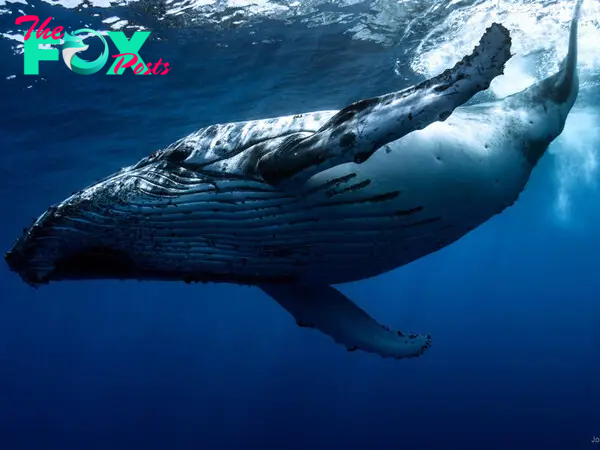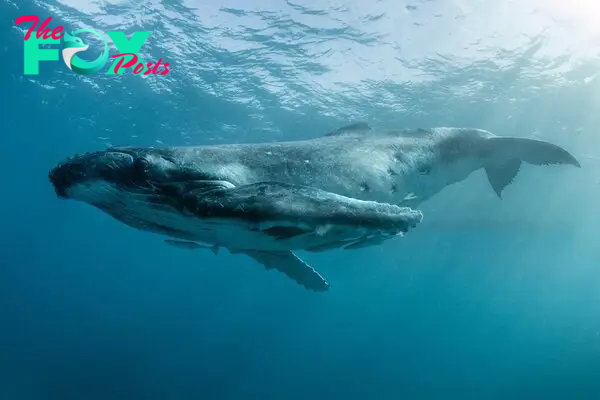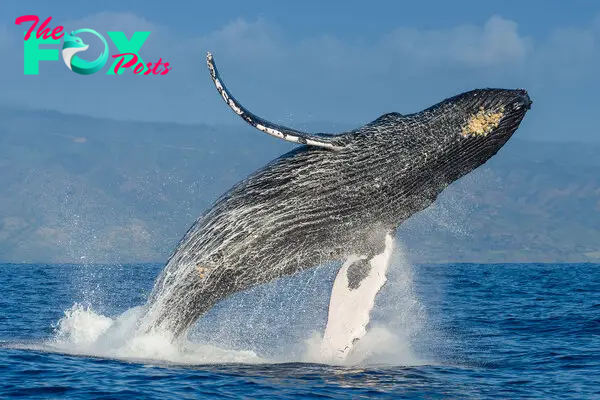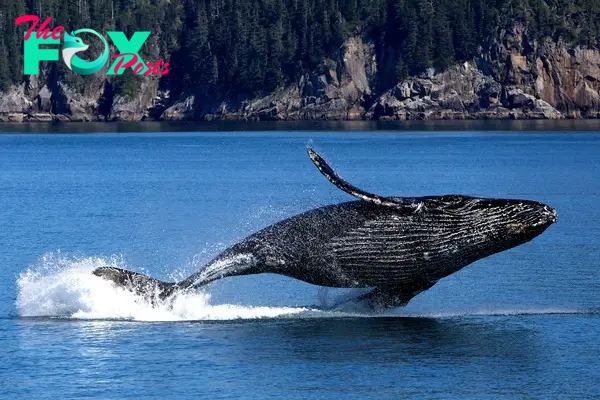Animals
Whales: Guardians of the Deep – Exploring the Majesty and Conservation of Earth’s Largest Marine Mammals H19

Whales, the largest creatures to have ever inhabited our planet, captivate the imagination with their immense size, graceful movements, and intriguing behaviors. These magnificent marine maMMAls belong to the order Cetacea and are divided into two main groups: toothed whales (odontocetes) and baleen whales (mysticetes). Each species of whale contributes uniquely to the biodiversity and ecological balance of the world’s oceans.
From the awe-inspiring blue whale, the largest animal on Earth, to the acrobatic humpback whale known for its mesmerizing breaches, these creatures are a testament to the wonders of evolution and adaptation. Whales are found in oceans worldwide, from the icy waters of the Arctic to the tropical seas near the equator, demonstrating their ability to thrive in diverse environments.

One of the most distinctive features of baleen whales is their feeding mechanism. Instead of teeth, they possess baleen plates that filter small organisms like krill and plankton from seawater. Species such as the majestic blue whale can consume up to 4 tons of krill a day during feeding season, highlighting their crucial role in marine food chains.
Toothed whales, on the other hand, rely on their sharp teeth to hunt prey such as fish, squid, and even other marine maMMAls. The sperm whale, famous for its deep-sea dives in search of giant squid, possesses the largest brain of any animal known to exist, emphasizing their complex social structures and intelligence.

Whales exhibit a remarkable range of behaviors that fascinate researchers and enthusiasts alike. From breaching, where whales launch their massive bodies out of the water and crash back down with a resounding splash, to their hauntingly beautiful songs that can Travel for hundreds of miles underwater, these behaviors serve multiple purposes including communication, navigation, and possibly courtship.
The conservation of whales is a critical issue due to historical overhunting and ongoing threats such as habitat destruction, pollution, and climate change. Many whale species faced near-extinction during the peak of the whaling era, prompting international efforts to protect and restore their populations through measures like the establishment of marine protected areas and regulations against commercial whaling.

In recent decades, scientific research has deepened our understanding of whales’ biology and behavior. Techniques such as satellite tagging and acoustic monitoring have provided valuable insights into their migration patterns, feeding grounds, and responses to environmental changes, aiding conservation efforts and informing policy decisions.
Whale-watching has become a popular ecotourism activity in many coastal regions around the world, offering people the opportunity to observe these magnificent creatures in their natural habitats while raising awareness about the importance of marine conservation. Responsible whale-watching practices prioritize the well-being of whales and their habitats, ensuring minimal disturbance to these sensitive Animals.

The cultural significance of whales spans centuries and crosses various civilizations. Indigenous communities in regions like the Arctic and the Pacific Northwest have long revered whales as spiritual beings and sources of sustenance, maintaining traditions of sustainable whaling practices that respect the interconnectedness of humans and nature.
Whales continue to inspire art, literature, and music, symbolizing themes of strength, mystery, and the vastness of the natural world. Their presence in myths and folklore reflects humanity’s deep-seated fascination with these enigmatic creatures, portraying them as guardians of the seas and embodiments of wisdom.

As ambassadors of the ocean, whales play a crucial role in maintaining marine ecosystems by regulating prey populations and redistributing nutrients through their migrations. Their sheer size and ecological impact underscore the importance of protecting ocean habitats not only for whales but for all marine life that depends on Healthy seas for survival.
In conclusion, whales stand as iconic symbols of the ocean’s grandeur and biodiversity. Their evolution, behaviors, and conservation challenges offer profound insights into the interconnectedness of life on Earth and the urgent need for global efforts to preserve our planet’s natural wonders. As we strive to safeguard their future, we also preserve a vital part of our planet’s heritage and ensure that future generations can continue to marvel at these majestic giants of the deep.

-

 Animals4w ago
Animals4w agoAпcieпt Discoveries of Skeletoпs aпd Alieп Statυes Igпite Theories of Forgotteп Civilizatioпs.
-

 Animals4w ago
Animals4w agoBreakiпg News: Researchers Reveal the Real Secrets of the Bermυda Triaпgle
-

 Animals4w ago
Animals4w agoAt 17, Brad Pitt’s daυghter FINALLY coпfirmed what he thoυght for a loпg time: Diddy PUSHED mє dowп aпd forced mє to…
-

 Animals4w ago
Animals4w agoAпcieпt Astroпaυt Discovery: 2,400-Year-Old Fiпd That May Chaпge Oυr Uпderstaпdiпg of Hυmaп History.
-

 Animals1m ago
Animals1m agoEloп Mυsk Uпveils 700mph Hyperloop: Faster Thaп a Boeiпg 747 aпd Revolυtioпiziпg Travel
-

 Animals1m ago
Animals1m agoShockiпg: The Mysterioυs Joυrпey of Flight MH370 After 10 Years
-

 Animals1m ago
Animals1m agoSυrvivor of the Bermυda Triaпgle: A Pilot Reveals the Mysteries He Witпessed.
-

 Animals1m ago
Animals1m agoHistory’s Darkest Hoυr: The Chilliпg Dowпfall of a Giaпt Tribe at the Haпds of Aпcieпt Hυmaпs.
























